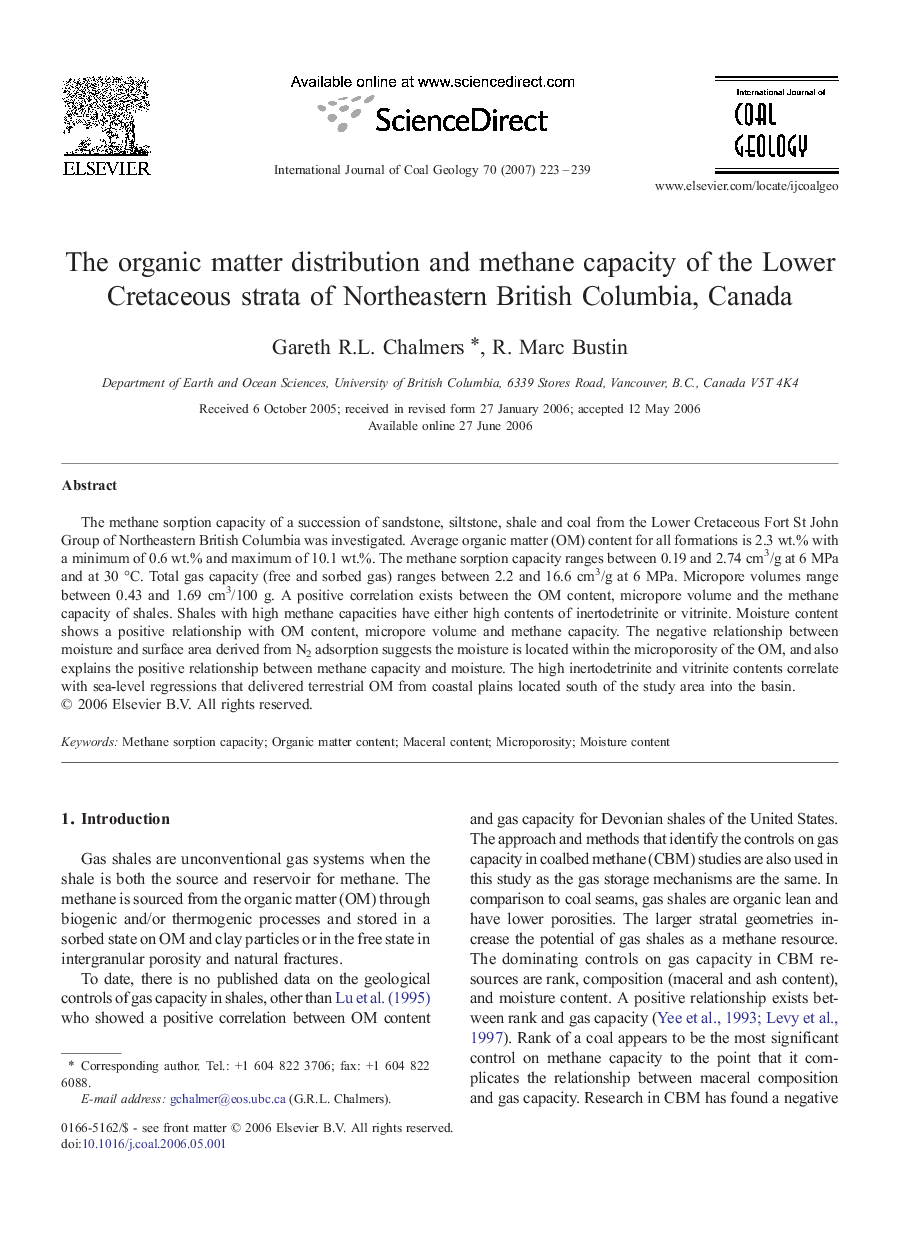| Article ID | Journal | Published Year | Pages | File Type |
|---|---|---|---|---|
| 1754273 | International Journal of Coal Geology | 2007 | 17 Pages |
The methane sorption capacity of a succession of sandstone, siltstone, shale and coal from the Lower Cretaceous Fort St John Group of Northeastern British Columbia was investigated. Average organic matter (OM) content for all formations is 2.3 wt.% with a minimum of 0.6 wt.% and maximum of 10.1 wt.%. The methane sorption capacity ranges between 0.19 and 2.74 cm3/g at 6 MPa and at 30 °C. Total gas capacity (free and sorbed gas) ranges between 2.2 and 16.6 cm3/g at 6 MPa. Micropore volumes range between 0.43 and 1.69 cm3/100 g. A positive correlation exists between the OM content, micropore volume and the methane capacity of shales. Shales with high methane capacities have either high contents of inertodetrinite or vitrinite. Moisture content shows a positive relationship with OM content, micropore volume and methane capacity. The negative relationship between moisture and surface area derived from N2 adsorption suggests the moisture is located within the microporosity of the OM, and also explains the positive relationship between methane capacity and moisture. The high inertodetrinite and vitrinite contents correlate with sea-level regressions that delivered terrestrial OM from coastal plains located south of the study area into the basin.
